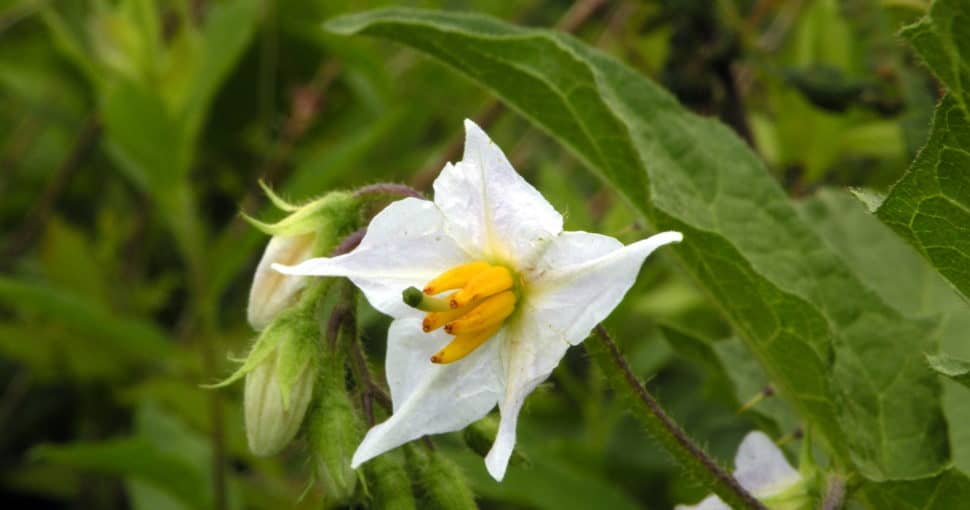When consumed, poisonous plants can cause disease, metabolic abnormalities, mortality, or other health issues in animals. This plant strain affects 3 to 5 percent of the animals that roam the pastureland, rangelands, and forest lands in the western United States each year. In Montana, several plants have been alleged to be toxic.
Contents
- 1. Milkvetch (Astragalus)
- 2. Poison Hemlock (conium Maculatum)
- 3. Locoweed (Oxytropis)
- 4. Death Camas (Toxicoscordion Venenosum)
- 5. Baneberry (Actaea Rubra)
- 6. Lousewort (Pedicularis)
- 7. Hairy Nightshade (Solanum Physalifolium)
- 8. Leafy Spurge (Euphorbia Esula)
- 9. Buttercups (Ranunculus)
- 10. Tansy Ragwort (Senecio Jacobaea)
- 11. Meadow Hawkweed (Hieracium Caespitosum)
- 12. Tall Buttercup (Ranunculus Acris)
- 13. Yellow Iris (Iris Pseudacorus)
- 14. Flowering Rush (Butomus Umbellatus)
- 15. Canada Thistle (Cirsium Arvense)
- 16. Myrtle Spurge (Euphorbia Myrsinites)
- 17. Dalmatian Toadflax (Linaria Dalmatica)
- 18. Oxeye Daisy (Leucanthemum Vulgare)
- 19. Saltcedar (Tamarix)
- 20. Hoary Alyssum (Berteroa Incana)
- 21. Christmas Rose (Helleborus Niger)
- 22. Leather Flower (Clematis)
The severity of the poisoning can vary widely depending on the plant, the species of animal that is poisoned, and the surrounding conditions. For example, a plant species may be beneficial to sheep as a feed yet harmful to cattle and horses as a toxic substance.
Another plant may be highly nutritious in tiny doses or at specific times of the year, yet it may be toxic under other circumstances. Pasture, rangeland, and woodland regions will always include poisonous plants, and they may even be purposely planted as cover crops or forages on crops. Several toxic plants are native to Montana that may be found in the wild.
Poisoning can also be exacerbated by improper cattle husbandry. Toxic plants cannot be distinguished from non-toxic ones using a single criterion or attribute. Therefore, it’s important to know which plants in the region are dangerous so that you don’t endanger yourself or your pets by eating them.
We’ve made a list of 22 dangerous plants in Montana to keep you safe.
1. Milkvetch (Astragalus)
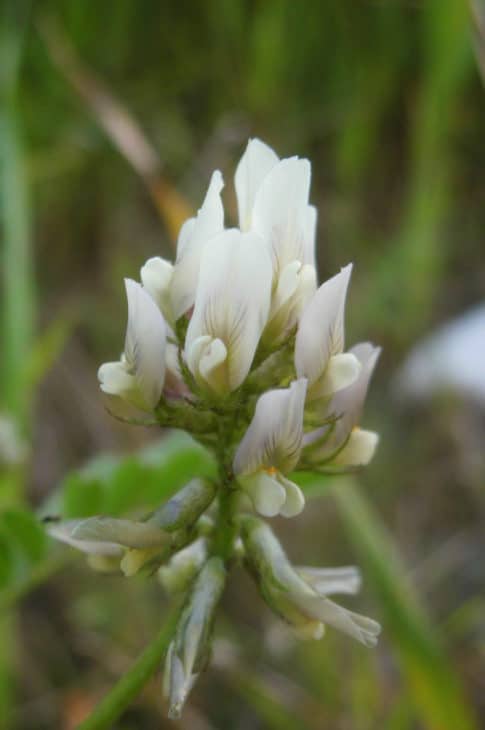
This is a very large genus and encompasses many types of plants. However, whichever plant it may be, all of them are poisonous. The Milkvetch is poisonous from the time they emerge until the heat or frost kills them. You may find this plant on hillsides when you go out in the wilderness for hikes. However, make sure to stay away from it and keep your pets away as well since the Milkvtech plant is known to be poisonous to cattle in specific.
2. Poison Hemlock (conium Maculatum)
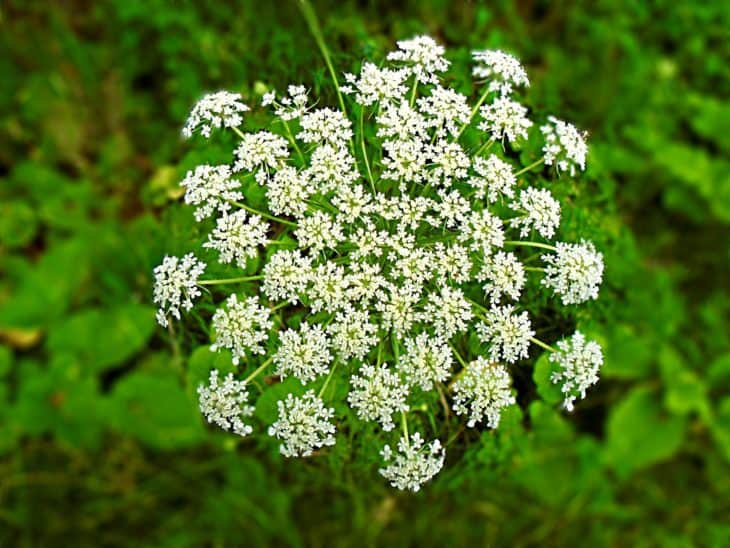
The roots of this plant have cells that contain a highly deadly brown liquid that is discharged when the root is broken or sliced, and this liquid is extremely toxic. There are several symptoms, including increased salivation and spitting, muscle spasms, dilatation of the pupils, irregular heartbeats and respiration, violent seizures, and coma. Death can occur as rapidly as fifteen minutes after ingesting a deadly dosage of a toxic substance.
3. Locoweed (Oxytropis)
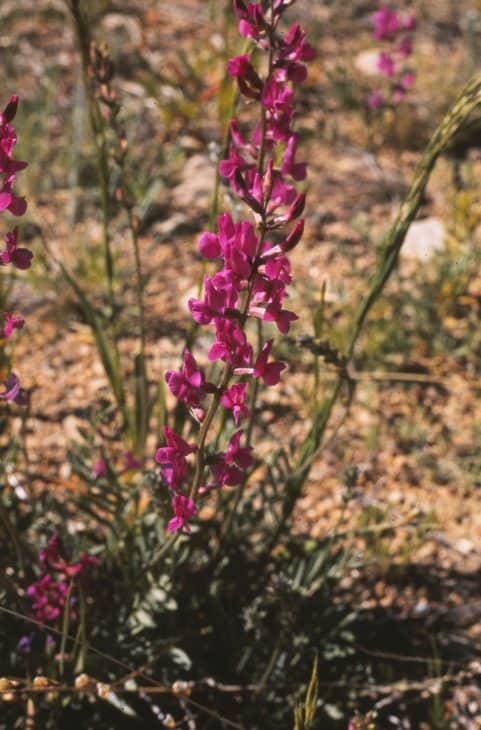
Also known as Loco or Crazyweed, this plant is common in North America. It produces selenium, phytotoxins, swainsonine, and other toxins that are harmful to livestock and can cause locoism. The symptoms of Locoweed poisoning include aggression, salivation, seizures, hyperactivity, weakness, fatality, and more. Locoweed features ovate to obovate, leathery leave, and dirty-white, purple-tinged blossoms that bloom in spring.
4. Death Camas (Toxicoscordion Venenosum)
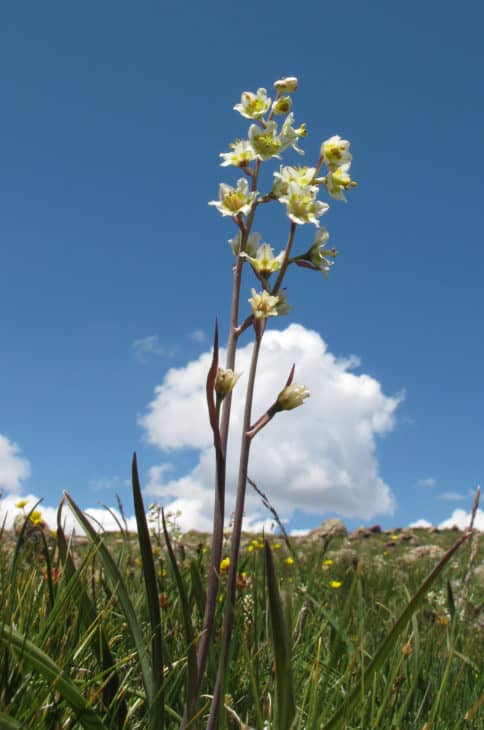
The death camas plant has leaves that look like grass, making it easy to confuse with wild onions. However, this plant has creamy white flowers and doesn’t have a distinctive onion smell. All parts of the plant are toxic to people and animals, and they can even be fatal. Before causing death, it may result in symptoms such as burning lips, excessive salivations, stomach pain, mouth-numbing, diarrhea, vomiting, confusion, difficulty breathing, and coma.
5. Baneberry (Actaea Rubra)
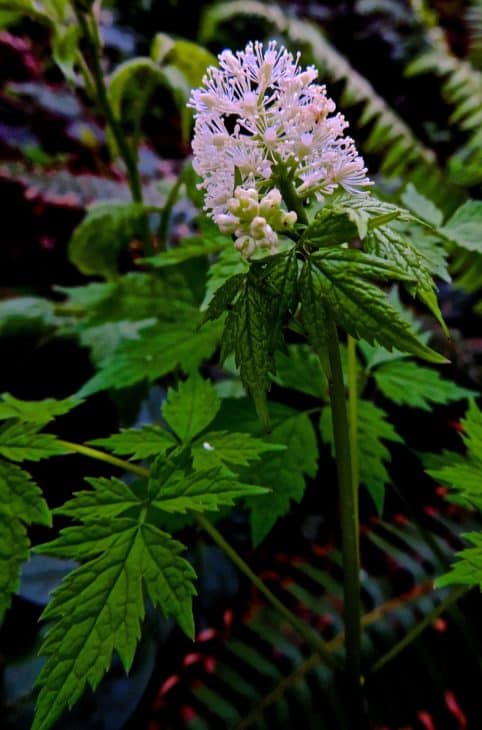
The shrub has glossy green leaves and clusters of white or pale pink berries. All parts of the plant are poisonous, and eating even a small quantity of the berries can cause serious health problems. The poison affects the digestive system, causing vomiting and diarrhea. In severe cases, it can lead to convulsions and death. Thankfully, the berries are not especially attractive to humans, and they are usually only eaten by mistake.
6. Lousewort (Pedicularis)
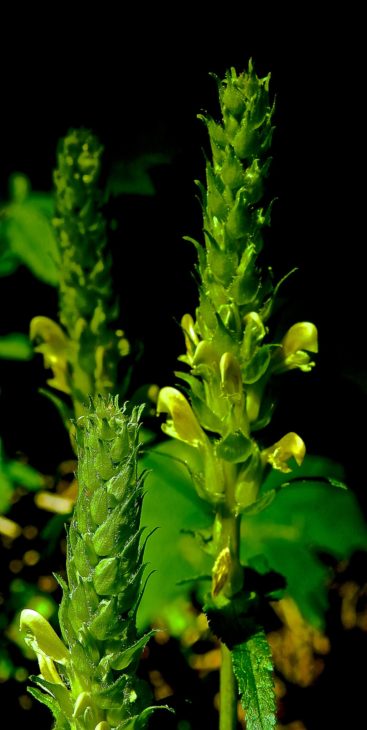
The Northern Hemisphere is home to more than 500 species of Lousewort, including 22 in Canada. The heights of the plant vary, but most are perennial (10-100 cm). To some extent, they are parasitic: green leaves provide some food, while suckers attach to grassroots and take nutrients from them, making them semiparasitic. Despite its current reputation as a deadly plant, common lousewort was formerly consumed by early immigrants and even utilized as animal feed.
7. Hairy Nightshade (Solanum Physalifolium)
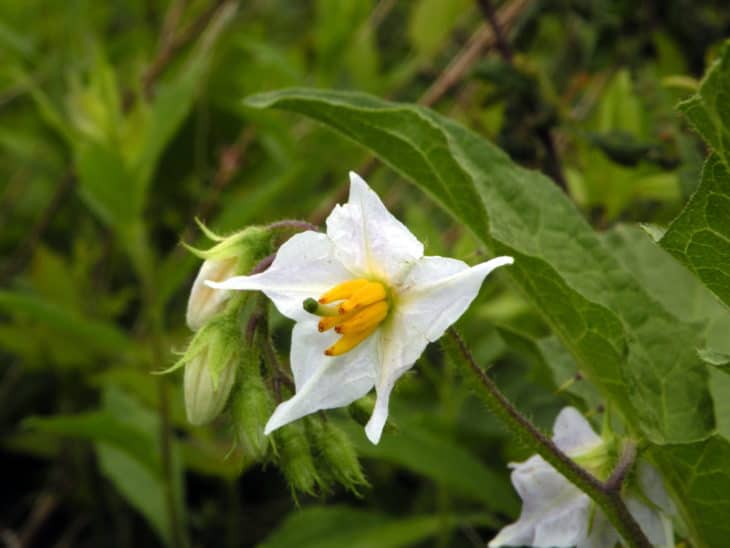
Nightshade berries offer the most significant risk to youngsters because they are beautiful and appear delicious at first bite, making them easy to swallow. Although just 2 of these berries may kill a kid, and just 10 or 20 of them can kill an adult, they are nonetheless dangerous. Similarly, humans may die from ingesting even a single leaf. In addition to streams and wetlands, bittersweet nightshade may be found in fields, gardens, parks, and roadsides across King County.
8. Leafy Spurge (Euphorbia Esula)
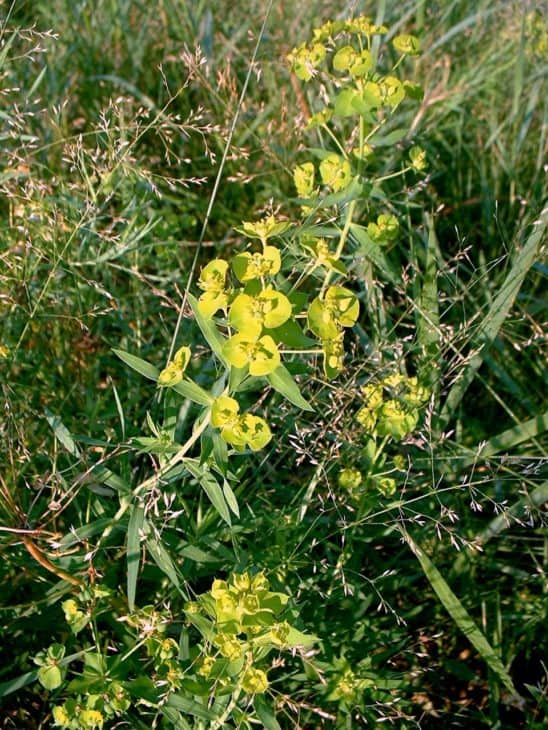
If leafy spurge isn’t kept under control once it appears, it will soon take over a neighborhood. Toxins in leafy spurge impair the digestive system, resulting in scours and frailty in animals. It can potentially kill you if you consume too much of it. Euphorbon, a poisonous alkaloid found in leafy spurge, is a known carcinogen and a known carcinogen in animals. The white latex sap of the plant is highly irritating to both human and animal skin, and it has been known to induce blindness in humans who come into contact with it.
9. Buttercups (Ranunculus)
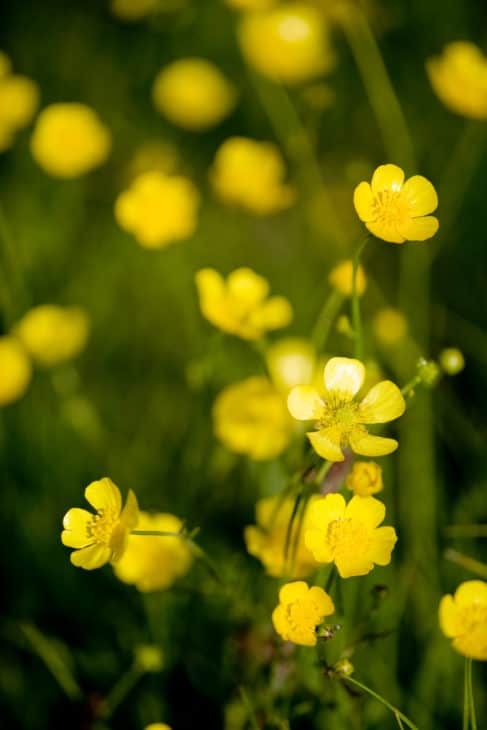
Buttercups have bright and shiny yellow flowers. These plants are typically found in areas with damp or wet soil. There are various species of buttercups, some more toxic than others. Some may have irritant oils on them, which could cause blisters in the mouth if consumed. That said, grazing animals are at more risk of this plant than people. It is important to note that while dried buttercup may not be harmful, the leaves of this plant are known to be exceedingly poisonous, and swallowing even a small amount will likely result in diarrhea, nervous twitching, and seizures.
10. Tansy Ragwort (Senecio Jacobaea)
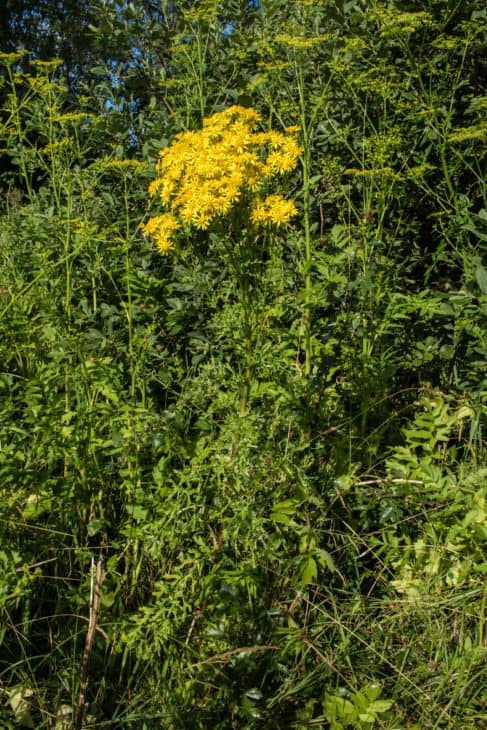
Tansy ragwort is a biennial weed that’s commonly found on rails, along roads, and in pastures. This toxic wasteland weed is possibly carcinogenic. It is also known for potentially causing liver damage if consumed. That said, human fatalities from this plant are not common. That said, a person can experience the same effects if they drink the milk of livestock that has consumed this plant. So why not plant a ragwort alternative instead?
11. Meadow Hawkweed (Hieracium Caespitosum)
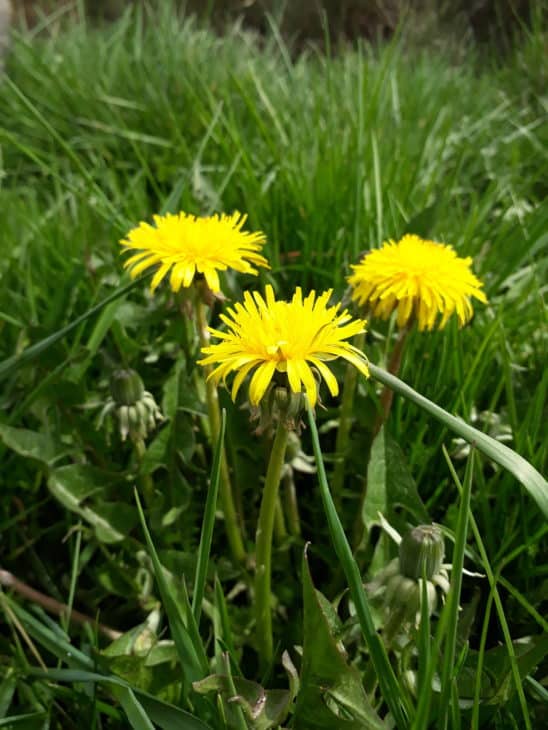
Asters (sunflowers) include perennials like Meadow hawkweed, which belongs to the Asteraceae family. The milky juice is found in the stem and leaves. Yellow, dandelion-like flower heads appear in clusters of five to thirty at the ends of the stalks. Ten to thirty blooming branches can be produced by each plant. Black hairs cover the bracts that support the flowerheads. In addition to being spherical, the clustered buds are hairy in black coloration.
12. Tall Buttercup (Ranunculus Acris)
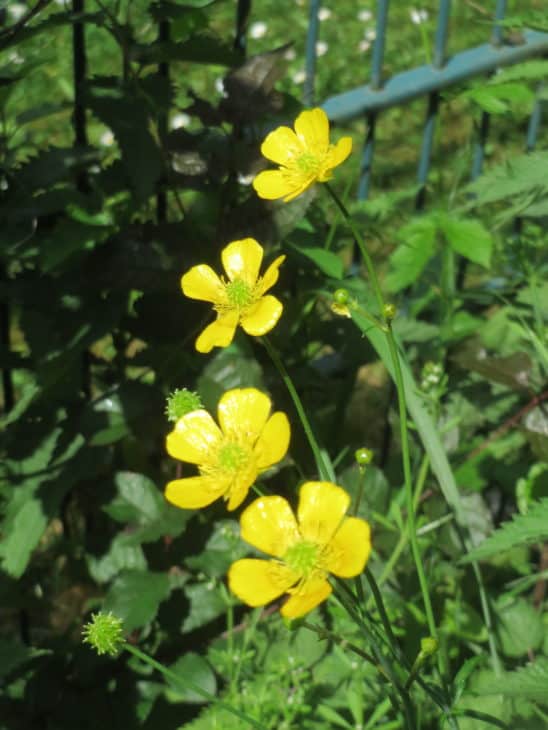
Buttercups are harmful to both cattle and humans at all periods of their lifecycle. Symptoms of intoxication begin as soon as the herb is consumed. Intestinal scorching and hemorrhagic diarrhea are only a few of the symptoms. Although all Ranunculus species are deadly when eaten fresh, their bitter taste and blistering of the tongue due to their poison means they are typically left uneaten. Protoanemonin, a poisonous oil that is bitter and stinging, is found in the oil. The skin may get irritated or blistered as a result of this.
13. Yellow Iris (Iris Pseudacorus)
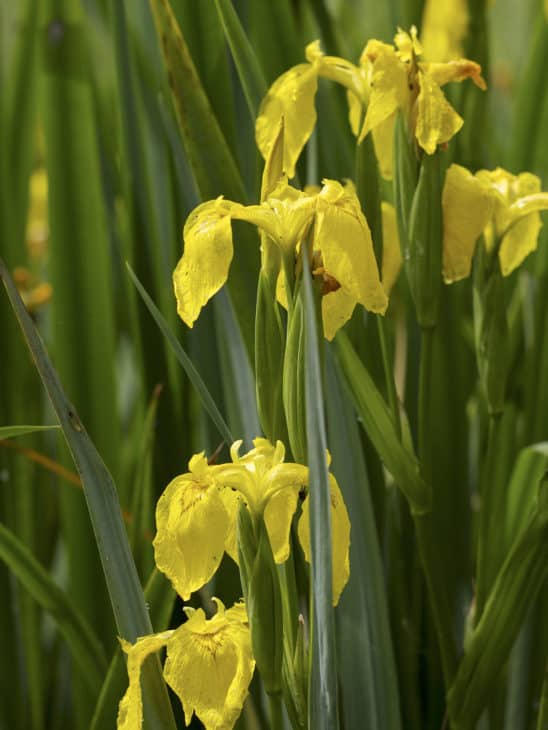
Several iris-derived chemicals may be harmful to humans, including iridin, irisin, and cuisine. Glycoside iridin poisoning can result in vomiting, nausea, diarrhea, stomach discomfort, and a high temperature. Also, Iris can cause skin irritation or dermatitis, so be careful when handling it. Iris bulbs may be just weakly toxic. If you’re allergic to any of the substances found in Irises, you should avoid eating or drinking anything made from them.
14. Flowering Rush (Butomus Umbellatus)
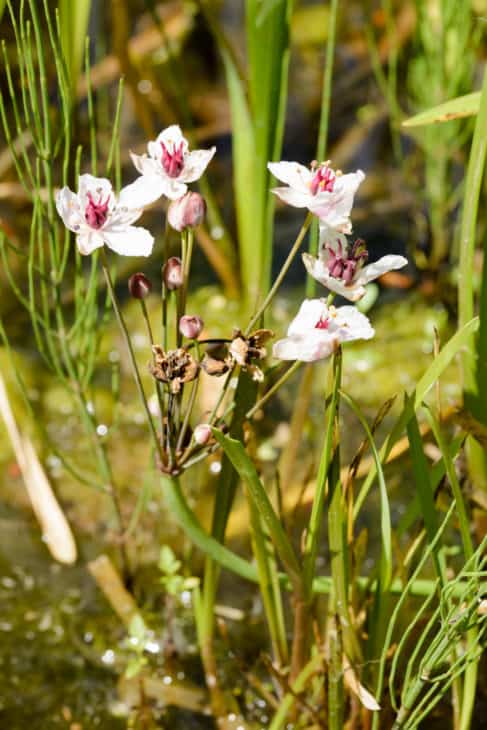
Although native to Europe and Asia, the flowering rush is a noxious invasive species in other regions. Because of its widespread ubiquity in North America and its high level of intrusion, it is now illegal in several jurisdictions. Seeds, rhizomes, and bulbils are all effective dispersal for this invasive species. The flowering rush is not believed to be harmful. If the blooming rush causes any issues, it is due to its rapid proliferation and subsequent crowding out of other plants.
15. Canada Thistle (Cirsium Arvense)
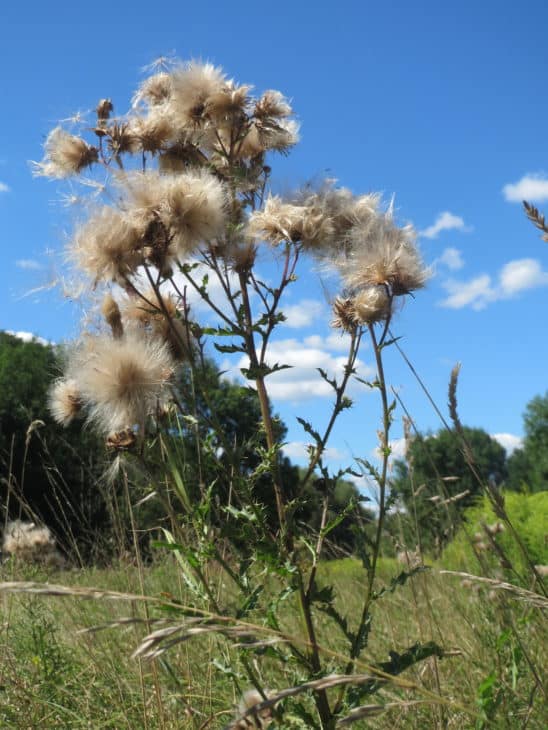
This noxious weed is poisonous to both humans and animals, and it spreads rapidly through its long, creeping roots. Canadian thistles can grow up to five feet tall, and their spiny leaves make them difficult to remove by hand. Even mowing or tilling the ground can spread the plant’s roots, making control measures very difficult. In order to prevent the spread of this weed, it is important to remove Canadian thistles before they go to seed.
16. Myrtle Spurge (Euphorbia Myrsinites)
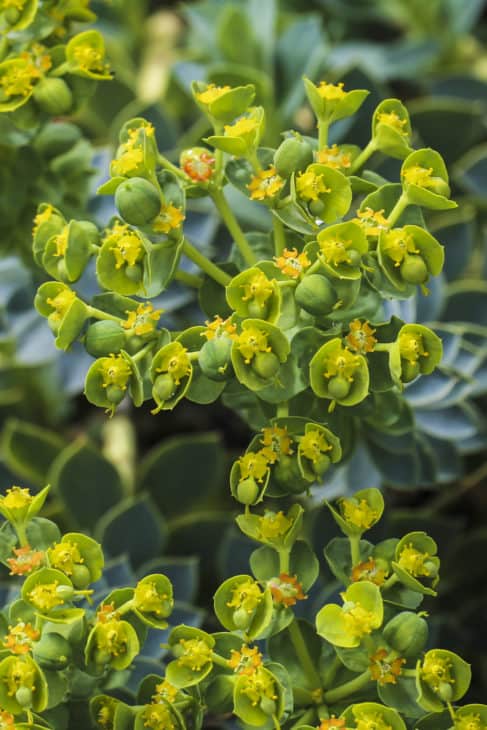
Donkey tail spurge, also popularly known as the myrtle spurge, is a highly toxic plant scattered in various parts of New Mexico. It is particularly dangerous because while ingestion is fatal, even mere contact with the plant can be dangerous. If humans touch this plant, they can experience eye irritation, swelling, and even blindness. Animals and pets who sit on this plant can experience irritation and rashes. When ingested, it can cause severe diarrhea and vomiting.
17. Dalmatian Toadflax (Linaria Dalmatica)
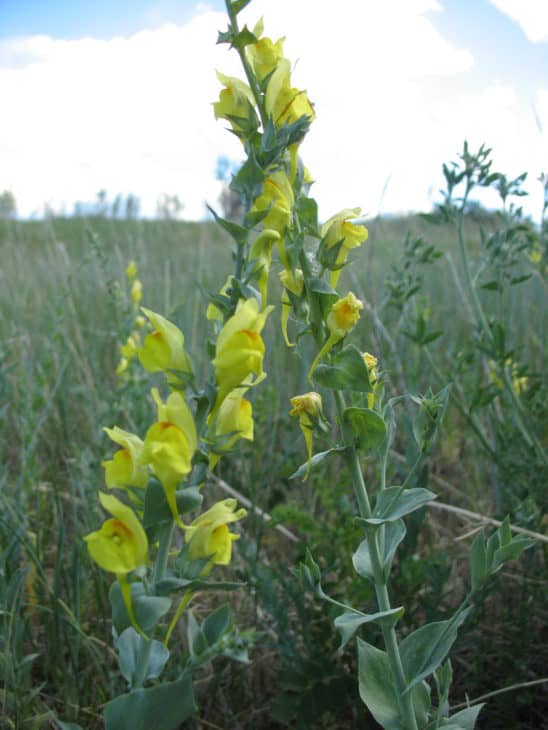
The Dalmatian toadflax needs well-drained, poorly graded soil in bright locations. Hillsides, meadows, residential areas, graveyards, gravel mines, and waste areas can all be included in this category. Large monocultures are formed when Dalmatian toadflax outcompetes beneficial species. There has been a decrease in livestock output, land prices, biodiversity, and animal habitat in the western states due to infestations.
18. Oxeye Daisy (Leucanthemum Vulgare)
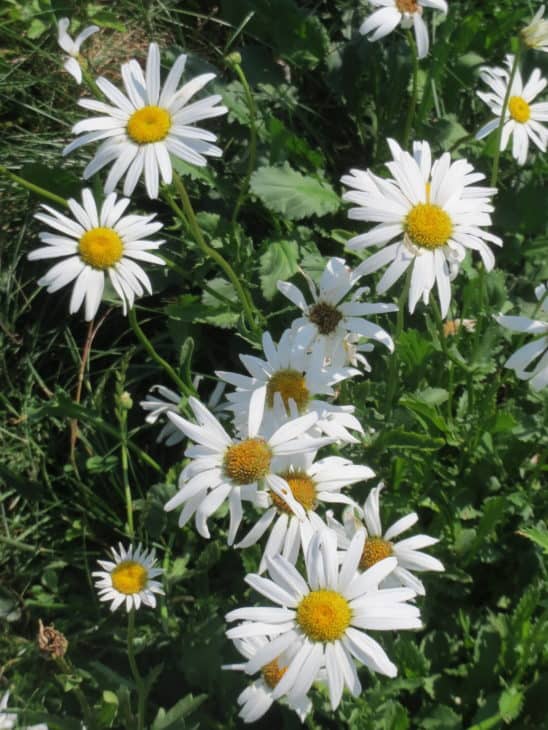
Daisies are a popular wildflower, most often seen in temperate European locations. While certain species of daisies are planted in flowerbeds to enhance the garden’s aesthetic, most daisies will spring up on their own in meadows, lawns, and forest floor areas. Daisies, despite their ubiquity, may be harmful to a wide range of animals, including cats. The adverse effects of daisy consumption might be exceedingly harmful in some circumstances.
19. Saltcedar (Tamarix)
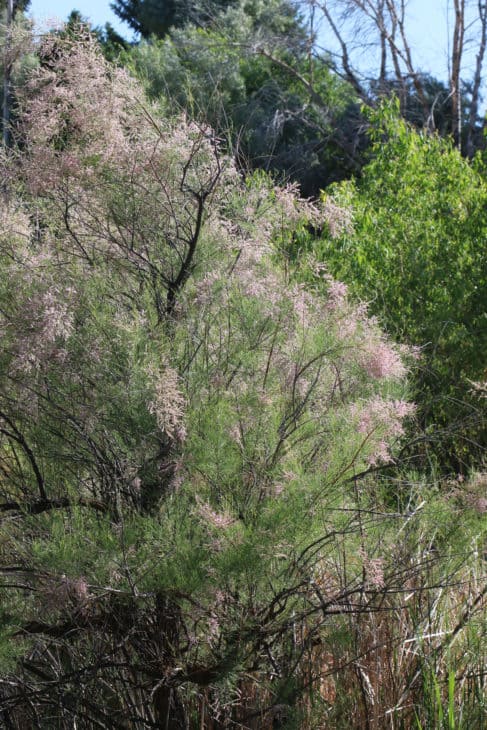
In the family Tamaricaceae, the genus Tamarix consists of roughly 50–60 species of flowering plants that you may find in the drier regions of Eurasia or Africa. Tamaris River, Hispania Tarraconensis, may be the source of the generic name. Poplar and willows (the most important native plants for animal habitat) are highly poisonous to imazapyr, so it is designated for their management. Native plants are likewise wiped off by the herbicide, while legumes and other plants are spared.
20. Hoary Alyssum (Berteroa Incana)
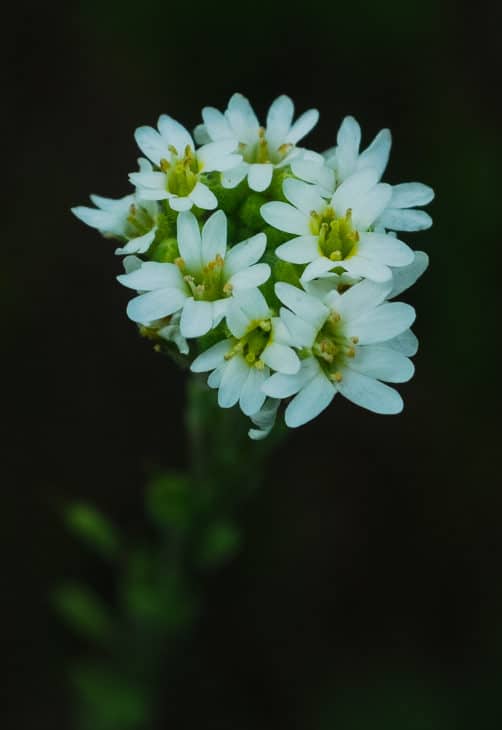
Hoary Alyssum thrives in areas where land is poor, dry to moist, and sunny – or in areas with fertile soil if there is a free spot available. The taproot is the source of its growth. The flower stalk emerges that same year from a cluster of basal leaves formed from seeds germinated in the fall. It is possible to grow flowering plants out of early seeds. Other plants are crowded out by a large number of developing seeds.
21. Christmas Rose (Helleborus Niger)
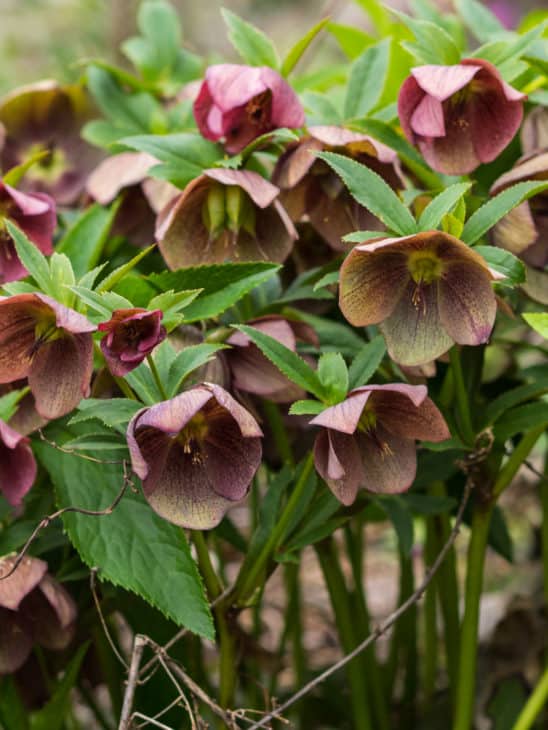
The evergreen perennial blooming plant Helleborus niger, widely known as the Christmas rose or the black hellebore belongs to the Ranunculaceae family of buttercups. It’s dangerous to eat. The Christmas rose is not a member of the rose family, despite the blossoms’ resemblance to wild roses. Poisonous parts of these plants include the stems, leaves, and roots. Pets and children alike can become unwell from eating any part of the plant, even if the effects aren’t life-threatening.
22. Leather Flower (Clematis)
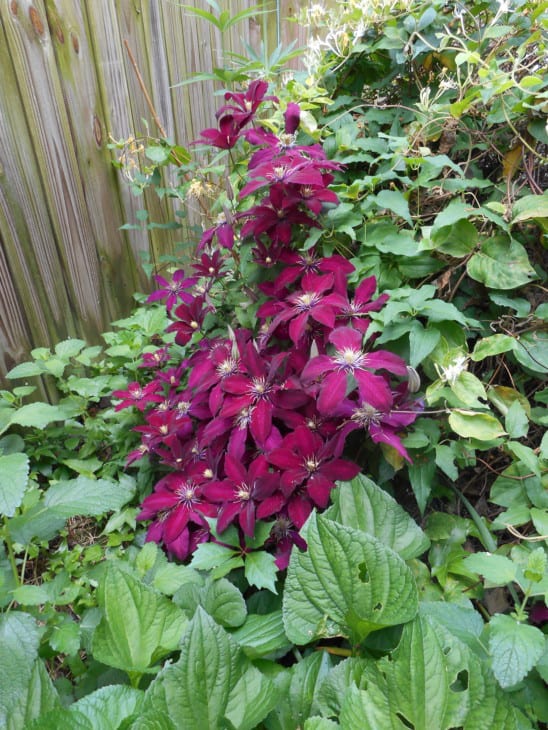
Ranunculaceae, the family of buttercups, include the genus Clematis, containing roughly 300 species. Clematis jackmanii, a garden staple since 1862, is only one of the many hybrid cultivars created by the genus Clematis over the years. Clematis leather flower vine is one of about 300 vines with woody stems in the clematis genus known as leather flower vines. Several chemicals in this vine give it mild toxicity.

